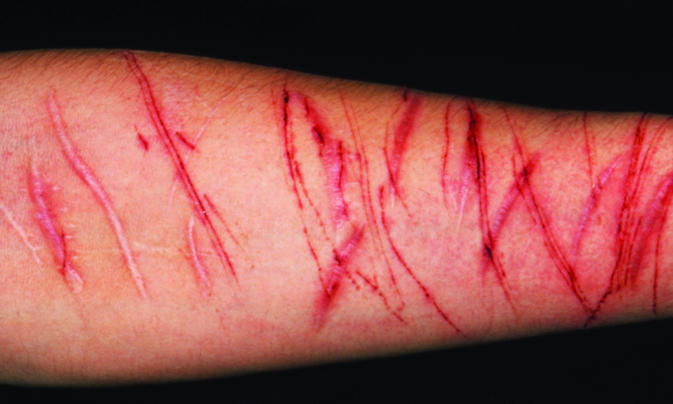Editor—The disappointing results of Bennewith et al's study are not particularly surprising.1 The intervention that they used (an offer of contact and an educational handout) was not beneficial in 11 previous studies.2 Indeed, no intervention has been effective in reducing future deliberate self harm, even when conducted by motivated researchers. This is probably because of the difficulty in overcoming the unpredictable future adverse circumstances of people who harm themselves.

P MARAZZI/SPL
General practitioners require a much more powerful tool than a handout to manage this complex group of patients. There is also an important methodological problem with the study concerning the population under study, as the authors have captured not only those who have made many attempts at harming themselves, whose motivation is self injury but not death, but also those who have made an unsuccessful serious suicide attempt.
The study has important lessons. Clearly most patients visit their general practitioner soon after they are discharged from the accident and emergency department with deliberate self harm, and the general practitioner is an important means of offering advice. Yet, what strategies might help general practitioners to manage this heterogeneous group of patients? One factor is how comfortable general practitioners feel in dealing with these patients. Evidence suggests that this is influenced by early exposure to psychiatry in vocational training schemes. Another variable is the efficiency of communication between hospital staff and general practitioners.
At the first point of contact the general practitioner is faced with not knowing the patient's recent history; the patient is as likely to present with physical symptoms as with mental health symptoms.3 If the patient's history is known, however, a clinician can have a high index of suspicion for mood disorder, personality disorder, or substance abuse.
In difficult cases joint work between primary and secondary care is an option, as this helps inform each party about the other's strengths. The evidence for education programmes was mentioned but dismissed by Bennewith et al because deliberate self harm is too rare to attract general practitioners' interest. But deliberate self harm is a behavioural manifestation of many disorders, of which depression and alcoholism are probably the most important reversible causes.
Importantly, many patients may initially experience considerable distress but never re-present with further episodes. So future studies should examine the effects of an intervention on the patient's mood and social function and behaviour.
There is reason to believe that general practitioners would be interested in improving their skills and knowledge about patients who harm themselves.
References
- 1.Bennewith O, Stocks M, Gunnell D, Peters JT, Evans MO, Sharp DJ. General practice based interventions to prevent repeat episodes of deliberate self harm: cluster randomised controlled trial. BMJ. 2002;324:1254–1257. doi: 10.1136/bmj.324.7348.1254. . (25 May.) [DOI] [PMC free article] [PubMed] [Google Scholar]
- 2. Freemantle N, Harvey EL, Wolf F, Grimshaw JM, Grilli R, Bero LA. Printed educational materials: effects on professional practice and health care outcomes. Cochrane Database Syst Rev 2000;(2):CD000172. [DOI] [PubMed]
- 3.Crawford MJ, Wessely S. The management of patients following deliberate self-harm—what happens to those discharged from hospital to GP care? Primary Care Psychiatry. 2000;6:61–65. [Google Scholar]


